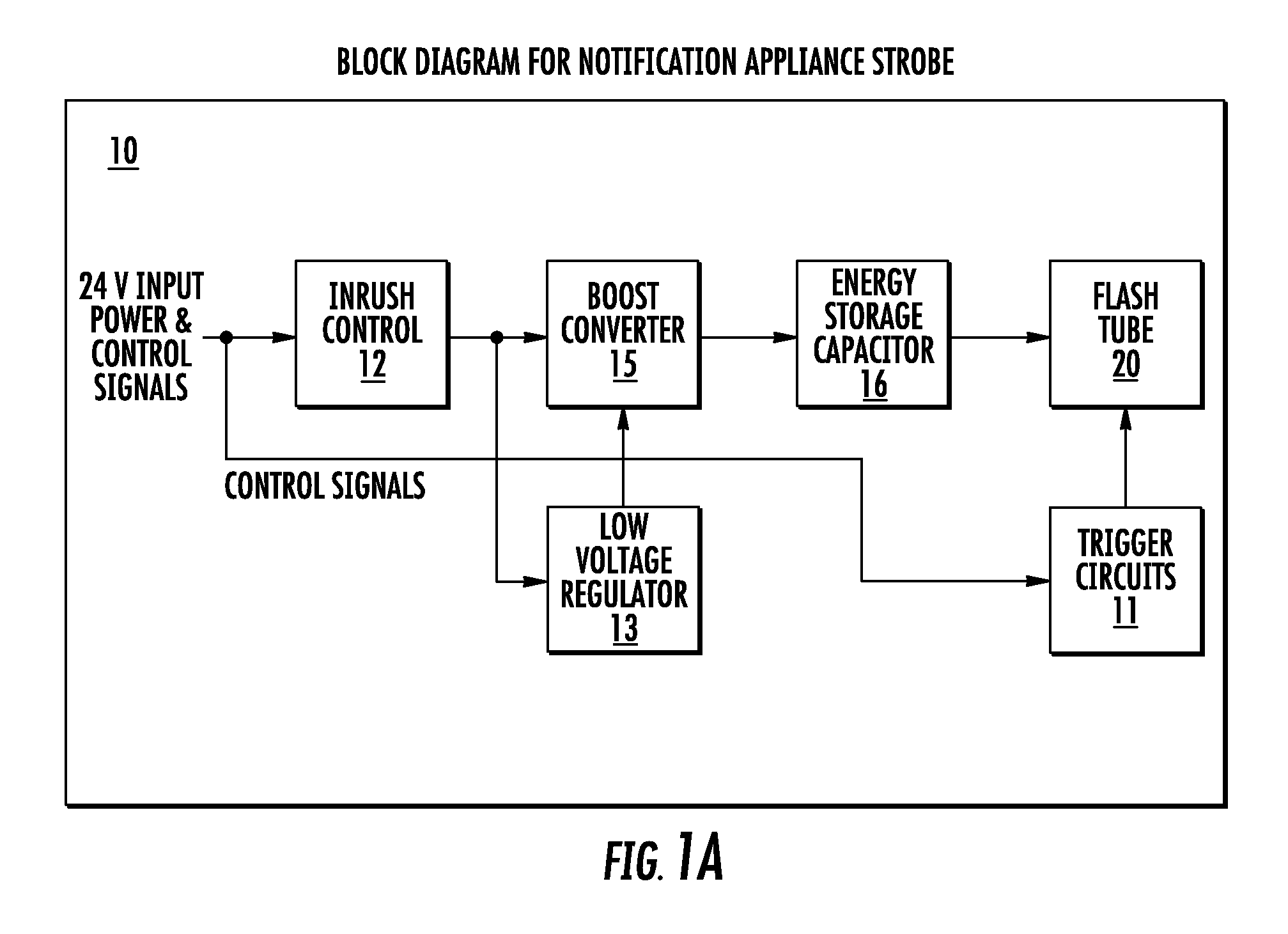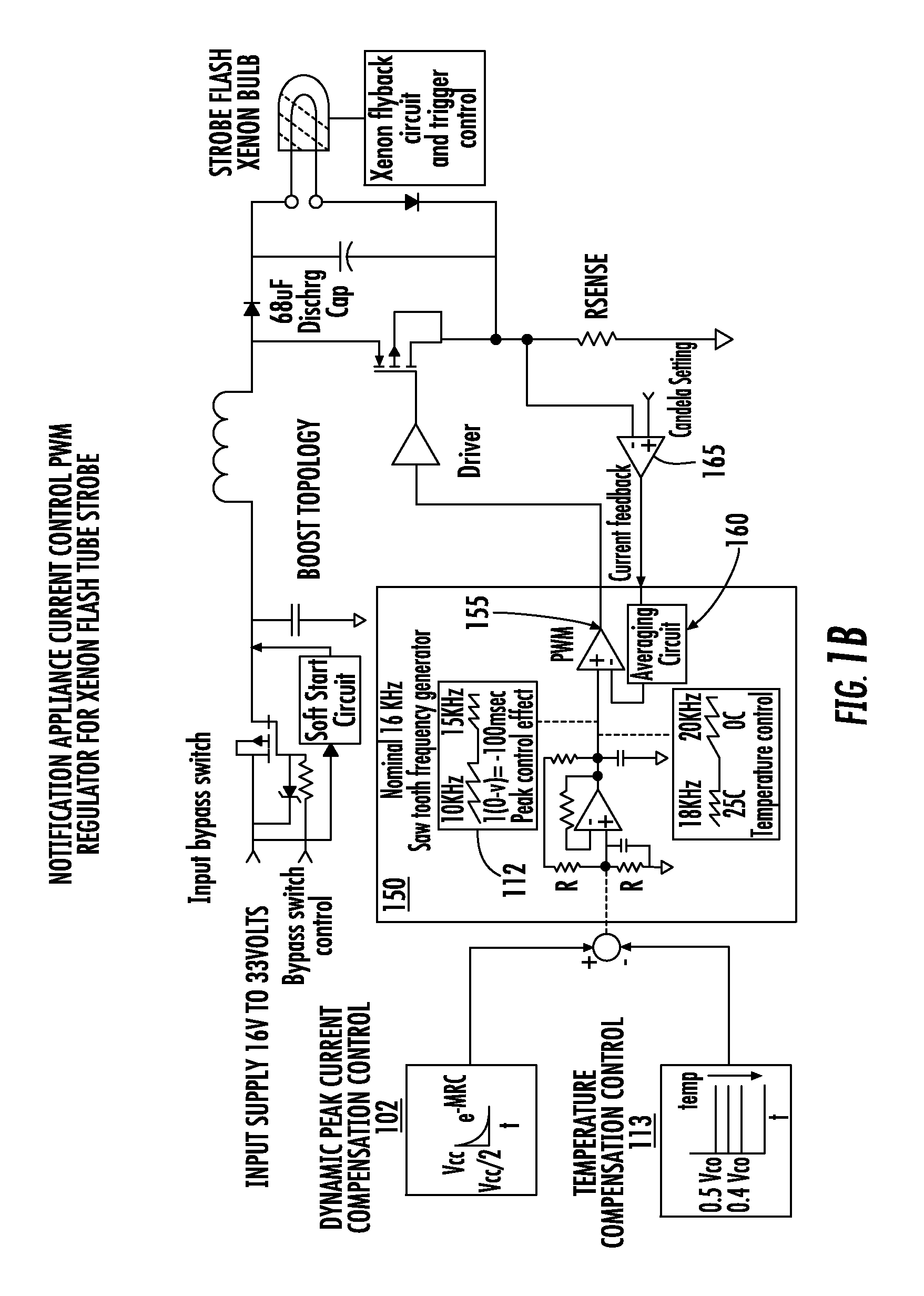Compensation circuit for current peaking reduction in notification appliances
a technology of compensation circuit and notification appliance, which is applied in the direction of lighting apparatus, instruments, light sources, etc., can solve the problems of shortened turn-on time, increased risk of epileptic seizures, and increased risk of seizures, so as to achieve long cycle time
- Summary
- Abstract
- Description
- Claims
- Application Information
AI Technical Summary
Benefits of technology
Problems solved by technology
Method used
Image
Examples
Embodiment Construction
[0020]The present disclosure will now be described more fully hereinafter with reference to the accompanying drawings, in which preferred embodiments of the invention are shown. This invention, however, may be embodied in many different forms and should not be construed as limited to the embodiments set forth herein. Rather, these embodiments are provided so that this disclosure will be thorough and complete, and will fully convey the scope of the invention to those skilled in the art. In the drawings, like numbers refer to like elements throughout.
[0021]Various embodiments may be generally directed to reducing current peaking in notification appliances. In one embodiment, for example, a current peaking compensation circuit may comprise two or more transistors and one or more capacitors configured to reduce a start-up frequency of a pulse-width modulated signal during a first time period and to add a time constant decaying voltage across a resistor divider network to increase a refe...
PUM
 Login to View More
Login to View More Abstract
Description
Claims
Application Information
 Login to View More
Login to View More - R&D
- Intellectual Property
- Life Sciences
- Materials
- Tech Scout
- Unparalleled Data Quality
- Higher Quality Content
- 60% Fewer Hallucinations
Browse by: Latest US Patents, China's latest patents, Technical Efficacy Thesaurus, Application Domain, Technology Topic, Popular Technical Reports.
© 2025 PatSnap. All rights reserved.Legal|Privacy policy|Modern Slavery Act Transparency Statement|Sitemap|About US| Contact US: help@patsnap.com



